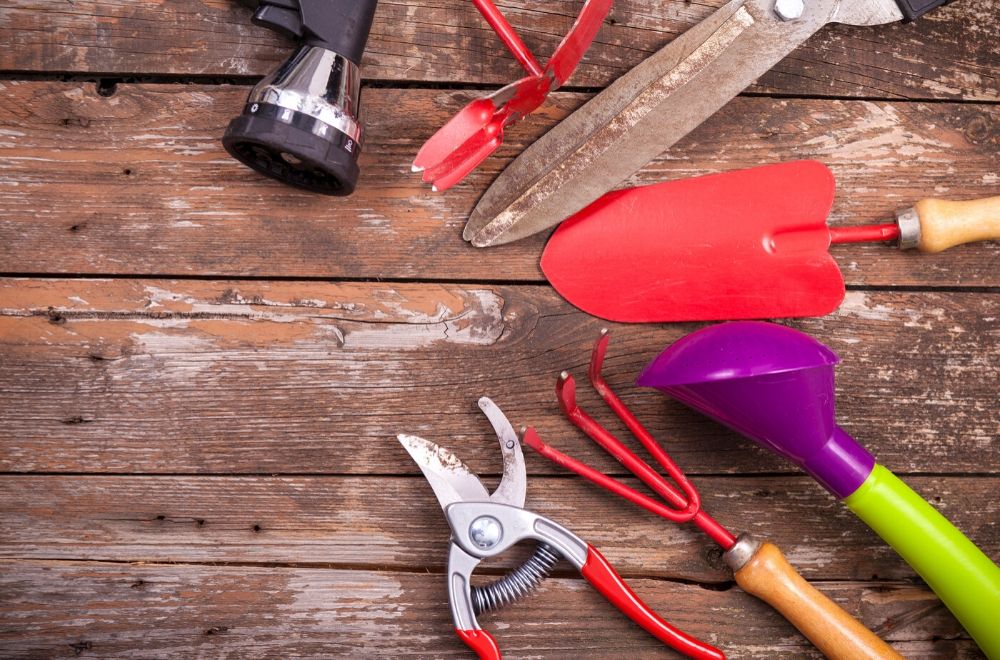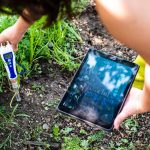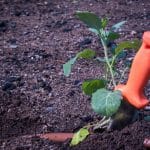Gardening is a truly satisfying hobby for it not only yields flowers and fruits but a natural beauty that relaxes us as well. However, it can be a tedious and time-consuming endeavor so if you have decided to be a serious gardener, you will need to exert time and effort before you can enjoy the fruits of your labor.
As a hobby, gardening should also be kept fun and stress-free and luckily, there are tools and equipment that can lighten the tasks and make growing flowers more enjoyable. There are different tools for certain planting jobs and using them accordingly will help you achieve the garden or indoor plant collections of your dreams!
- Types of Yard Tools
- A List of Essential Garden Tools You Should Have
- 1. Hand trowel
- 2. Garden hand fork
- 3. Shovel
- 4. Spade
- 5. Garden Rake
- 6. Watering can
- 7. Garden hose
- 8. Garden knife
- 9. Weeder
- 10. Wheelbarrow
- 11. Pruning shears hand pruners
- 12. Pruning saw
- 13. Mattock
- 14. Hedge scissors
- 15. Moisture meter
- 16. Hand sprayer
- 17. Soil test kit
- 18. Leaf blower
- 19. Tree pruner
- 20. Lawnmower
- 21. Watering wand
- Personal Protective Equipment (PPE)
- Garden Tool Care and Maintenance
- Other Garden Materials
We have created this article to help you be more familiarized with the tools, materials, and equipment often used in gardening. There is also useful information to keep your tools in top shape and to use them efficiently in your garden. Read on to learn more about the essential gardening tools to successfully build your own garden of flowers.
Types of Yard Tools

Starting and maintaining a garden entails several tasks that will ultimately lead to your dream plant haven. According to the famous horticulturist, Gertrude Jekyll, a garden teaches patience and careful watchfulness.
Gardening requires one to be all hands-on but tools and equipment exist to help us work more efficiently and to lessen the callus forming on our hands. These tools are categorized according to the purpose that they serve.
Digging and planting tools can create holes in the ground where the plants will be laid and allowed to grow. They can also be used in turning soil and mixing in fertilizer or lime. These tools are also used to move soil or planting media from the ground to a container or another garden tool. Trowel, mattock, and spade are some of the common digging tools.
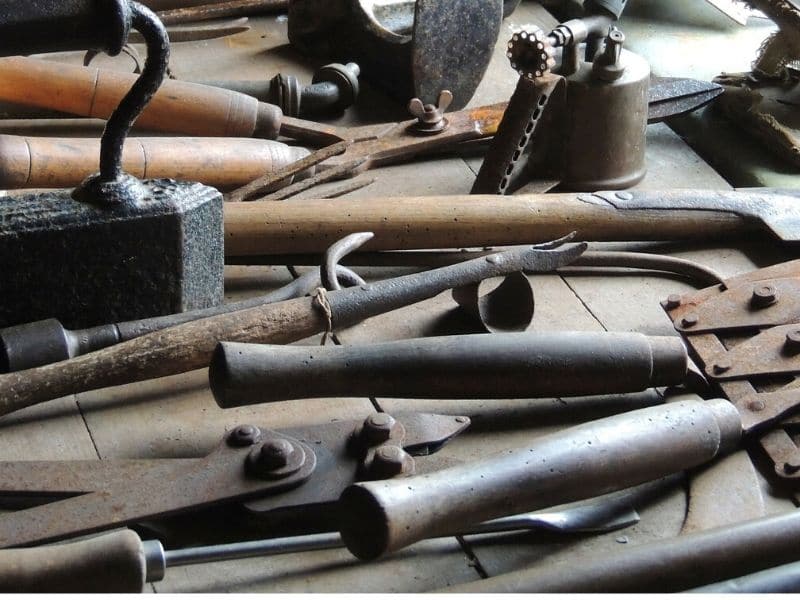
Lifting and hauling tools move garden materials from one place to another and are designed according to the texture and weight of the materials. Lifting tools like garden fork and shovel are designed to pick up loose or bulky materials. Hauling tools like buckets, wheelbarrows, and carts move these collected materials from one place to another.
Raking and weeding tools are tined or pronged tools that cultivate and level the soil and also removes dirt and unwanted small plants in the garden. They often have long handles to assist the gardener in exerting force when hitting the ground and dragging the tool. These tools include bow rake, standard leaf rake, and metal weeder.
Pruning and cutting tools are among the important tools for the garden. These mechanical tools remove dead and infected or overgrown plant parts like tree branches, buds, and leaves. They can also be used in creating cuts on the plants for propagation. Pruning shears, tree pruner, and hedge trimmer are the most common pruning tools for the garden.
Watering tools bring the moisture to plants and is either in the form of a watering can or a garden hose. Each type has its own advantages and disadvantages in terms of capacity and mode of application. Chemical applicators, on the other hand, are vessels for fertilizers and pesticides. The most common is the hand sprayer and knapsack sprayer.
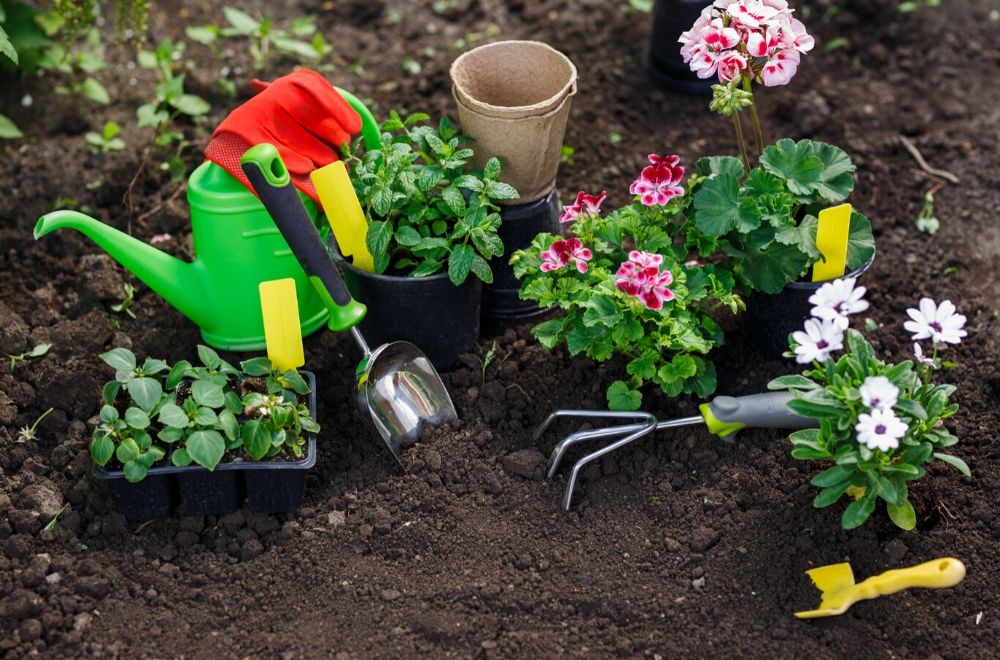
Power tools are those that require electricity or fuel to function. Most garden power tools are for cutting and using them accomplishes the job faster and more efficiently. However, they can be bulky and expensive. Chainsaw, lawn mower, grass cutter, and leaf blower are the common power tools for bigger gardens.
Other useful garden tools include moisture meter to monitor water in the soil, root barrier to contain the root growth, especially of trees, tree brace to support newly planted balled-and-burlapped small trees and tall shrubs, garden twine to support the tendrils of your vines and thin stems of your delicate shrubs, and soil test kit to keep track of the nutrient content of the soil.
A List of Essential Garden Tools You Should Have
1. Hand trowel
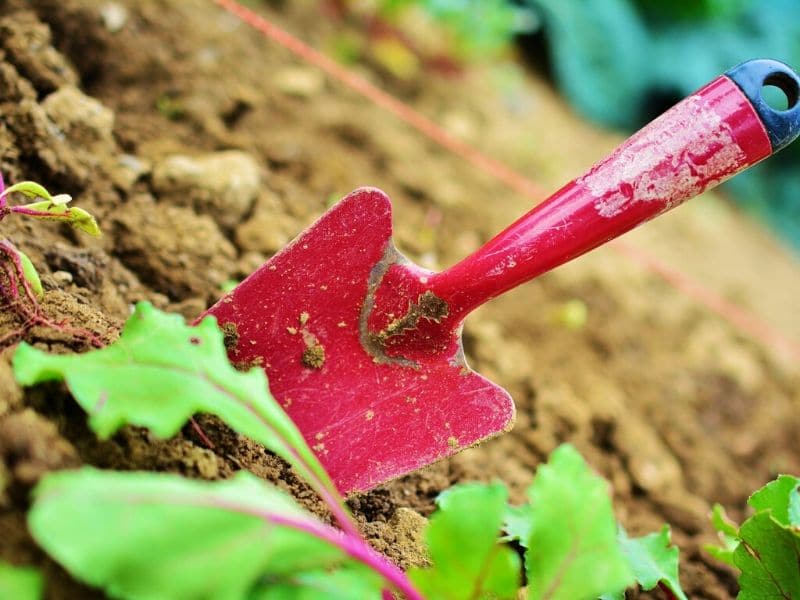
The most basic gardening tool is the hand trowel and you are not a gardener is you don’t own one. They are tools with stainless steel heads often used in digging holes in the ground and moving soil and plants from one place to another for planting and potting activities. It is the best tool to use when dealing with container plants for it easily fits small spaces when digging the soil (1).
Choose a broad blade for moving more soil or a long, thin blade for digging up weeds or tough terrain.
A hand trowel is also used in mixing soil with other planting media like rice hull, coco coir dust, peat moss, etc. It can be used in lieu of other tools for gardening practices like weeding, soil cultivation, and aeration.
2. Garden hand fork
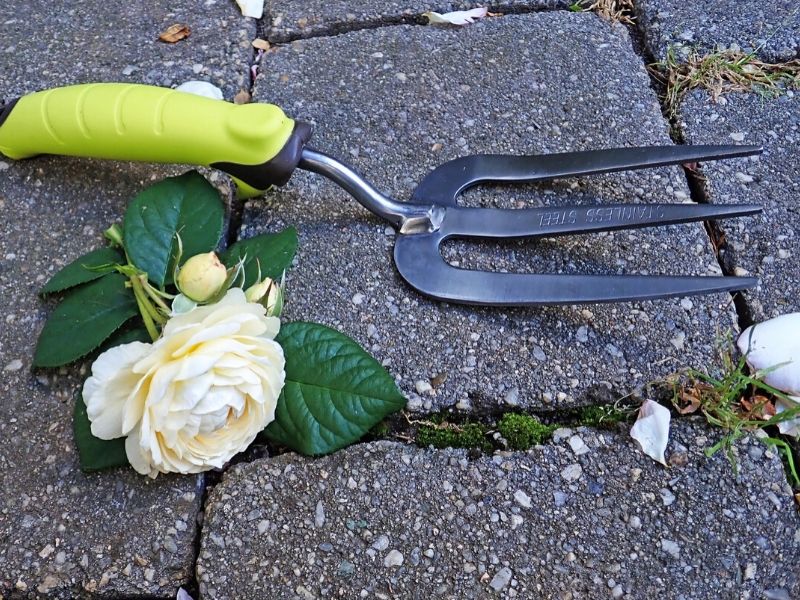
This small hand-held tool is mainly for aerating and loosening compacted or hard soil but can be used in digging up clusters of weeds for easy removal. Hand fork is a perfect tool in tilling small garden lots or plants in pots.
It is also very handy in dividing plants ready for transplanting since the steel tines or prong readily breaks the lump of soil upon digging and the extra soil and attached weeds easily fall off (2).
3. Shovel
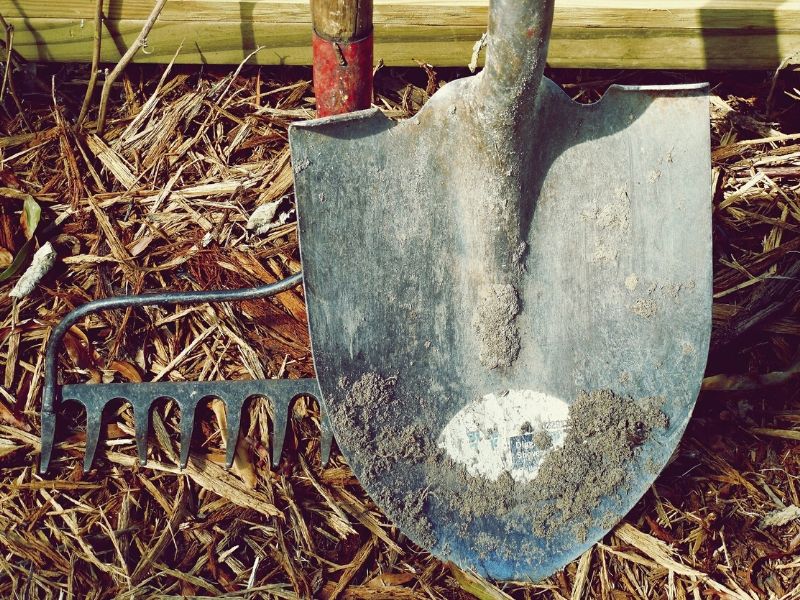
A shovel is categorized as a lifting tool and although it can definitely be used in landscape excavation, it is more often used in shoveling and moving soil around since the curved blade is wide enough to lift and carry bigger dirt and stones.
Referring to shovel as a spade is a common mistake but it is helpful to know that most shovels have pointed or rounded blade tips. It is used in moving bigger mounds of soil as well as turning and mixing soil and other amendment materials (2).
4. Spade

Spade is the digging tool to use when dealing with larger garden spaces. It creates bigger and deeper planting holes with straight sides since the blade is flat and usually rectangular. The primary function of a shovel is for digging and filling in the dirt when planting shrubs and trees (1).
The sharp blades are also perfect for edging beds and grass lawns, and even though they will not be as efficient in lifting soil as the shovel, they can still carry soil so that you will not have to change tools in the middle of the planting activity.
5. Garden Rake
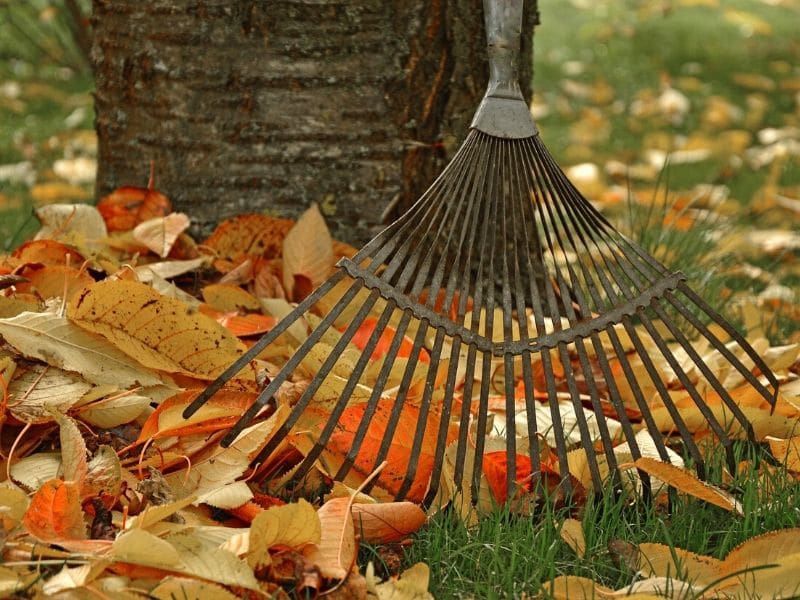
A ground rake is like a comb for the garden—it can smoothen or make the contours of the soil even while removing lesser fine debris and working fertilizer or pesticide into the soil. This tool is made of tines which are dragged through the earth to perform its function (2).
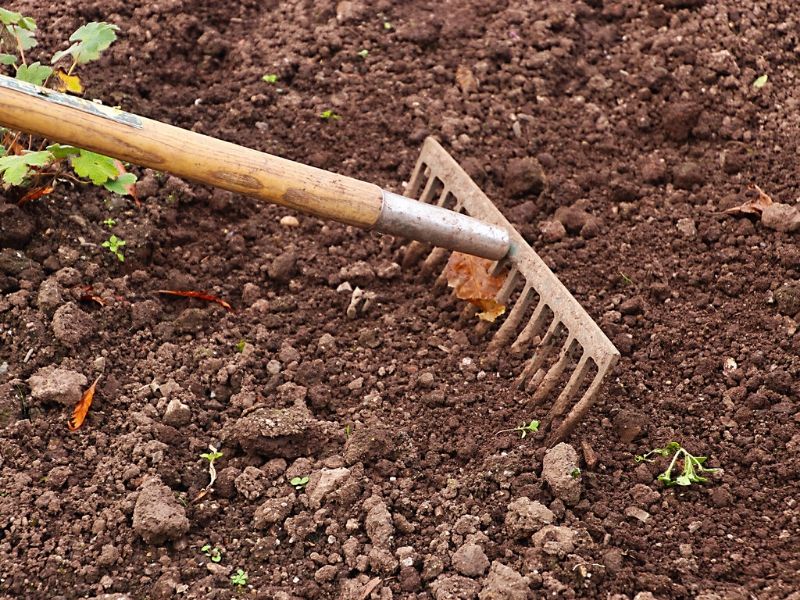
There are different kinds of rakes, a bow rake is a heavy type made of metal that changes the contour of the soil by moving it without lifting while a lawn rake or fan rake is a springy type that removes debris like dried leaves and fallen twigs from grass areas.
Steel tines are more durable and may be more abrasive on delicate lawns than plastic tines.
6. Watering can
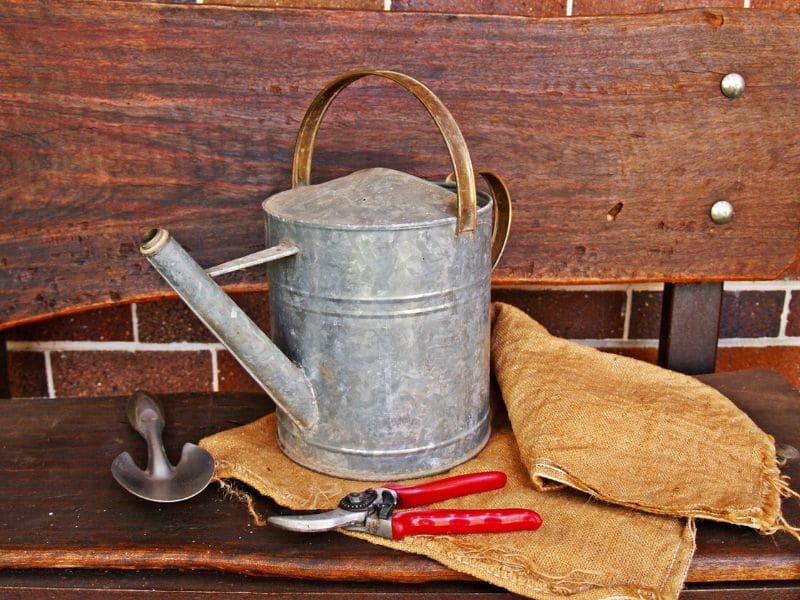
Also called hand sprinkler, this hand-held tool is used in watering small scale gardens as well as potted houseplants. It has a handle for carrying and a mouth or spout where the rose or perforated disk for a shower-like spray is attached.
It is an old-fashioned watering device that is still preferred today by gardeners because of its portability and the closer connection it seems to bring between the gardener and the plants. It can be made out of stainless steel or plastic and has a capacity of up to 10 liters of water (1).
7. Garden hose

This long flexible tube is designed to help gardeners water wider garden plots, garden lawns, and potted and hanging plants with ease since water is continuous. Gardeners can supply an ample amount of moisture without having to stop and refill their containers.
If you’re feeling quite lazy and don’t want to move around but still have to water your parched plants, you can just install a nozzle at the end of your hose and adjust the shower spray to reach the plants. Rubber hoses are a more flexible type and preferred over plastic ones that crack in cold weather (2).
8. Garden knife

A garden knife serves multiple purposes and is one of the most essential gardening tools of a gardener. It has a serrated steel blade initially intended to cut away roots and divide clumps of young and small plants. The Japanese version called Hori Hori became popular for its versatility when used in transplanting and weeding too.
A garden knife can measure planting depth since one side of the blade serves as a ruler which can be handy, especially when planting a species that needs a certain soil layer thickness to germinate. The pointed tip of the blade can also be used to create markings on the soil or ground when laying out a planting plan.
Related: Best Hori Hori Gardening Knives For Digging and Weeding
9. Weeder

Weeding is often done by manually pulling out the weeds from the soil where your plant is growing. Some weeds have a shallow root system and can easily be removed but there are those with well-anchored taproots which many gardeners struggle to get rid of, like dandelions.
A hand weeder is a useful tool that allows the gardener to pull out these weeds with ease. A hand trowel or fork can be used too but the two prongs at the end of a weeder can dig through and loosen up the soil better while taking a good hold of the roots of the weeds (1).
See more: How to Keep Weeds Out of Garden
10. Wheelbarrow
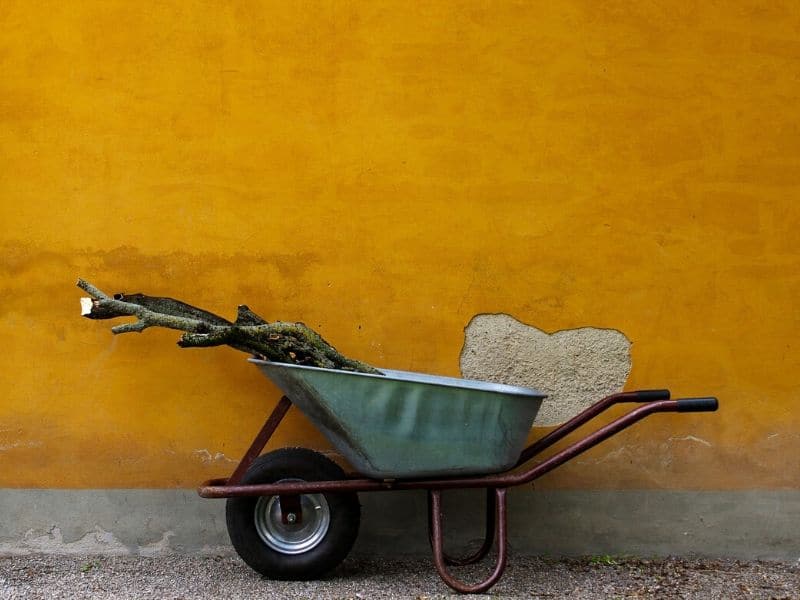
Gardening can be a strenuous endeavor and it involves a lot of lifting and moving things from one place to another. A wheelbarrow is a good aid in moving garden materials around and avoid any injury from these activities.
This one-wheeled tool is used to easily maneuver your way to and from the garden while carrying heavy and bulky materials like soil, debris, boulders, fertilizer, plants, etc. A good wheelbarrow should be lightweight but sturdy (1).
11. Pruning shears hand pruners
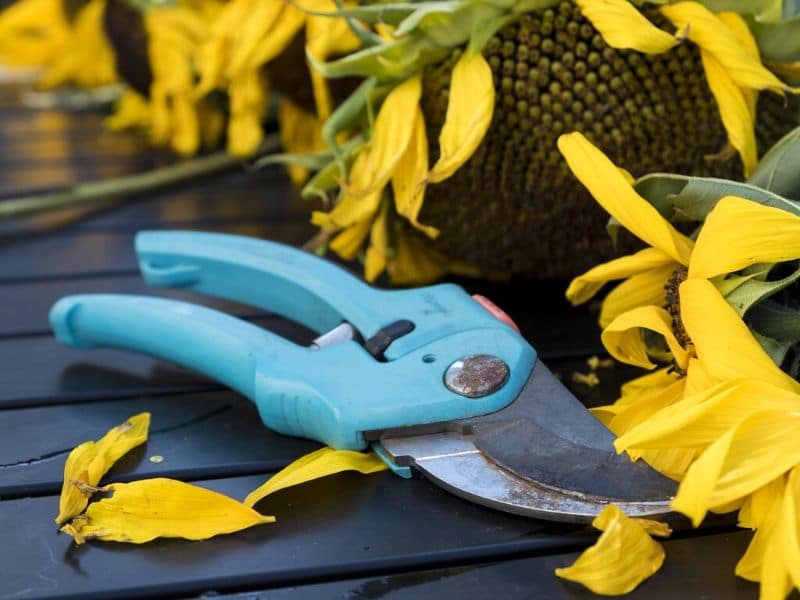
Every plant in a well-maintained garden should be trimmed and pruned from time to time to avoid overcrowding and competition for light, water, and nutrient as well as keep the garden pleasant to the eyes. A pair of pruning shears can help sculpt the plants and remove dry parts and overgrowths (2).
A good pruning shear is sharp to create clean cuts and comfortable to hold to minimize the strain on the hands. Keep in mind that the bypass pruners are intended for thin twigs and soft branches only.
12. Pruning saw

Pruning is a maintenance practice that not only keeps the plants looking tidy but also contributes to the plant’s productivity in terms of flowering and fruiting. There are different pruning tools for different plant parts (2).
Pruning saw should be used when dealing with semi-large woody branches, usually up to 1 to 2 inches thick. Pruning saw has a curved blade that either has a protective scabbard or can be retracted from its hollow handle. It is a very useful tool when reaching for branches within thickets.
13. Mattock
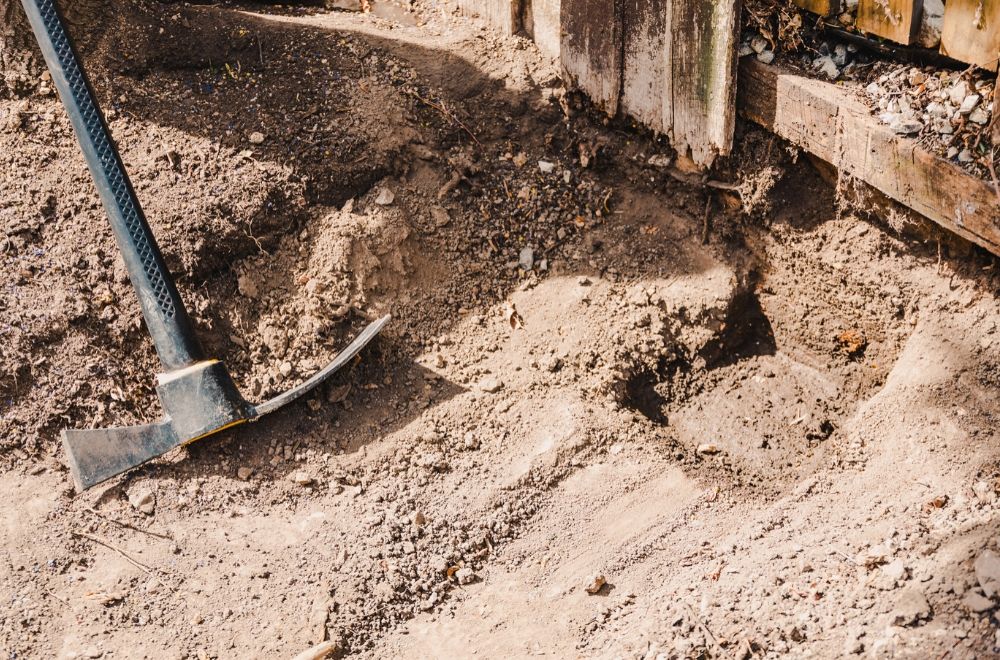
A hard and clayey location is not the best to create a garden on so it needs to be cultivated, cleaned of hard and stony, and backfilled with garden soil. Mattock is the essential tool to use when manually tilling this hard firmly packed soil.
There are various types of mattock but the most popular among gardeners is the pick mattock. It has a blade on one side and picks on the other which is handy when striking stony soils. The blade may also be sharp enough to cut through large tree roots encountered while digging (1).
14. Hedge scissors
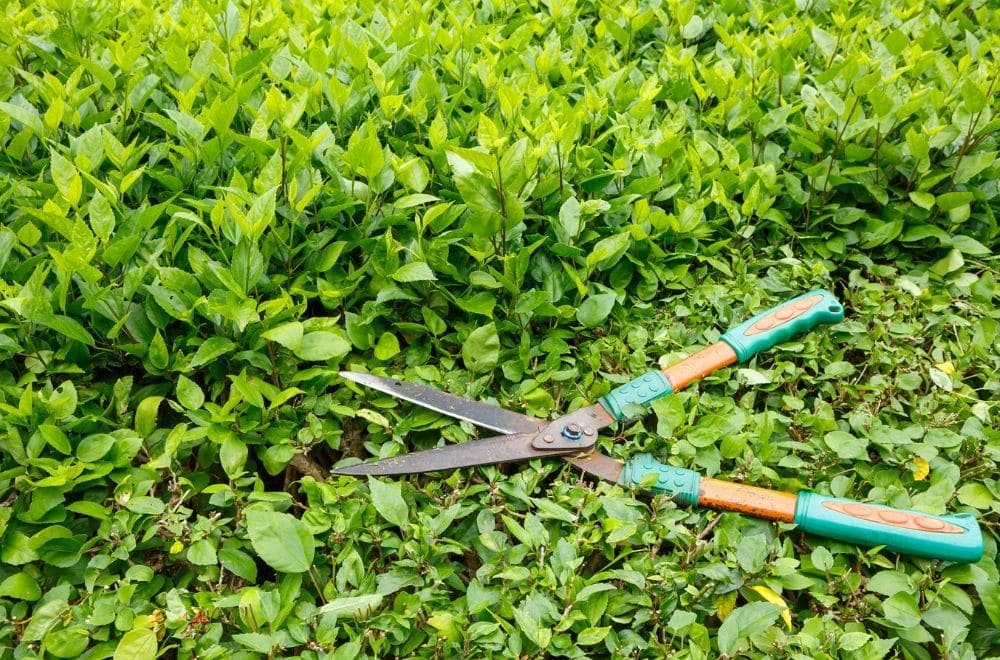
Also called bush scissors or hedge trimmer, hedge scissors do what the name implies. It is used to cut away overgrowths to maintain the shape of a hedge or a shrub. In many formal garden beds, hedges and shrubs have a maintained form like topiary and this is not achieved by the mere use of pruning shears and pruning saw.
There is also a motorized hedge trimmer for larger gardens that have intensive topiaries. Pruning a shrub to shape can be tedious and repetitive so an electric or motorized pruning tool hastens the activity and makes it more accurate (2).
15. Moisture meter
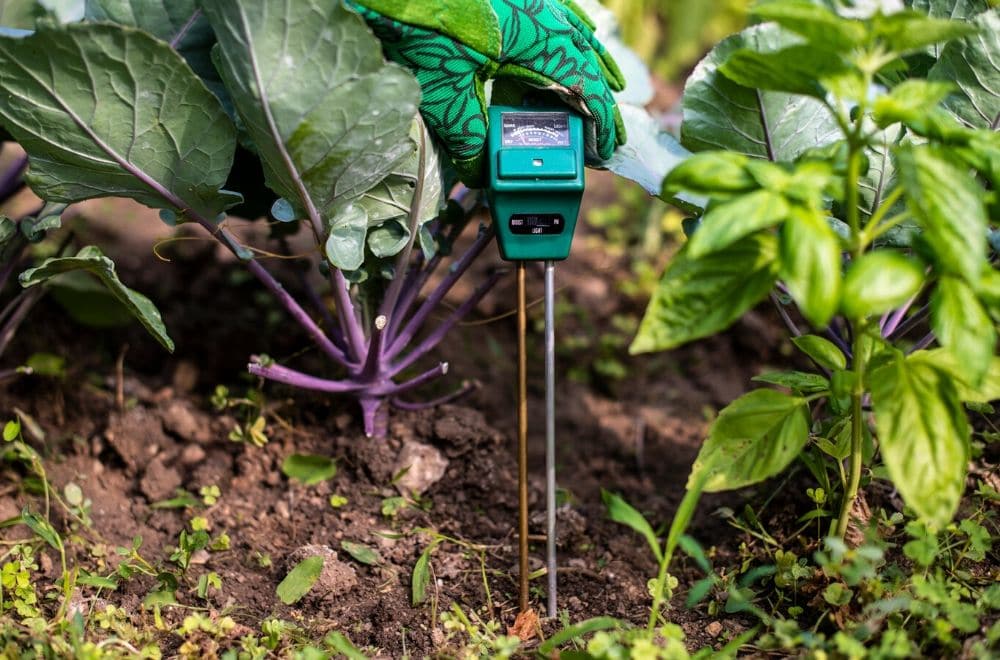
The most common way of checking if the plant needs to be watered is by feel method wherein the finger is inserted into the soil to check if there is enough moisture within the vicinity of the plant’s root system. The moisture meter is a more accurate tool that does the job, especially for big potted plants and the garden.
It tells the exact reading of the available moisture and indicates if it’s time to water the plants again. This is important in monitoring plants’ health since not all plants have the same water requirements.
16. Hand sprayer
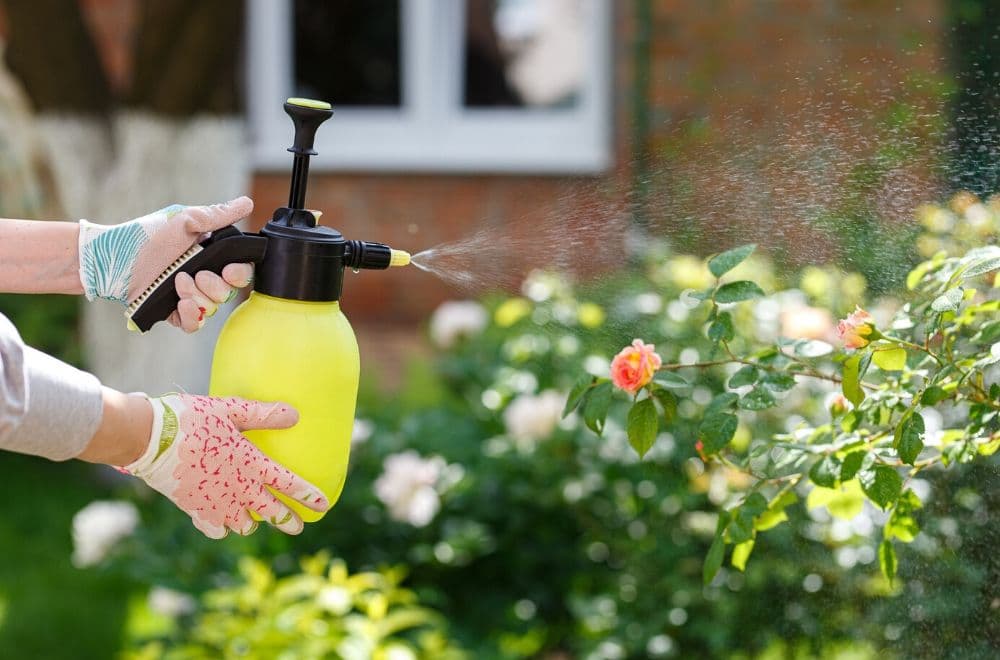
Fertilizers and pesticides supply some of the important requirements of plants to grow and avoid pests but they can be harmful to gardeners. A hand sprayer is a garden device where chemicals can be mixed and contained for easy and safe application. Most sprayers are pressurized to efficiently apply the fertilizer or pesticide.
The coverage of the spray can also be adjusted through the nozzle. In the absence of a watering can or hose, a hand sprayer can be used for watering as well. Consider the capacity, cost, and design when choosing a hand sprayer.
17. Soil test kit
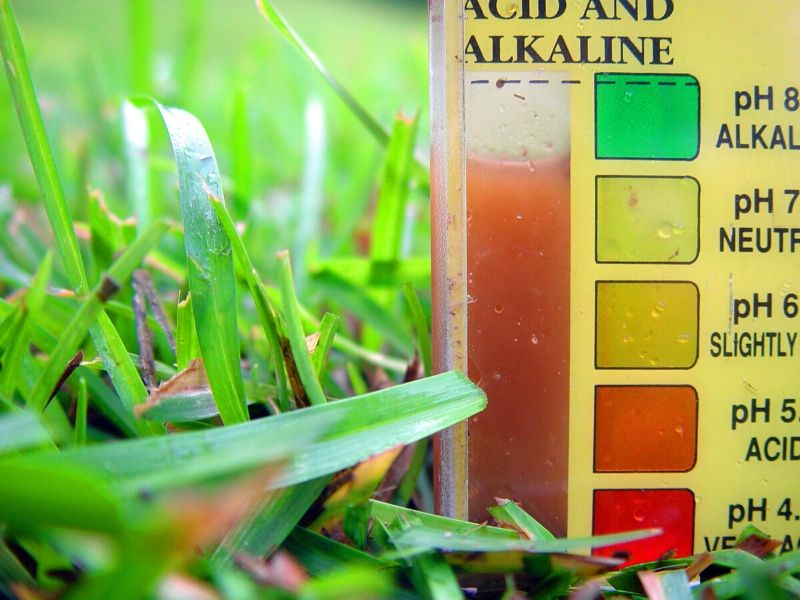
Plants may yellow, wilt, and die without any signs of pests and most of the time this is due to lack of nutrients available. A soil test kit (STK) is a piece of good equipment that readily identifies the right nutrients to supply to your plants. Most STKs test for macronutrients present in the soil.
Nitrogen, phosphorus, and potassium are three important nutrients for plant growth and their availability in the soil are indicated through the colorimetric method. Soil pH can also be obtained. STKs include a step by step process so a beginner can easily perform the test.
18. Leaf blower
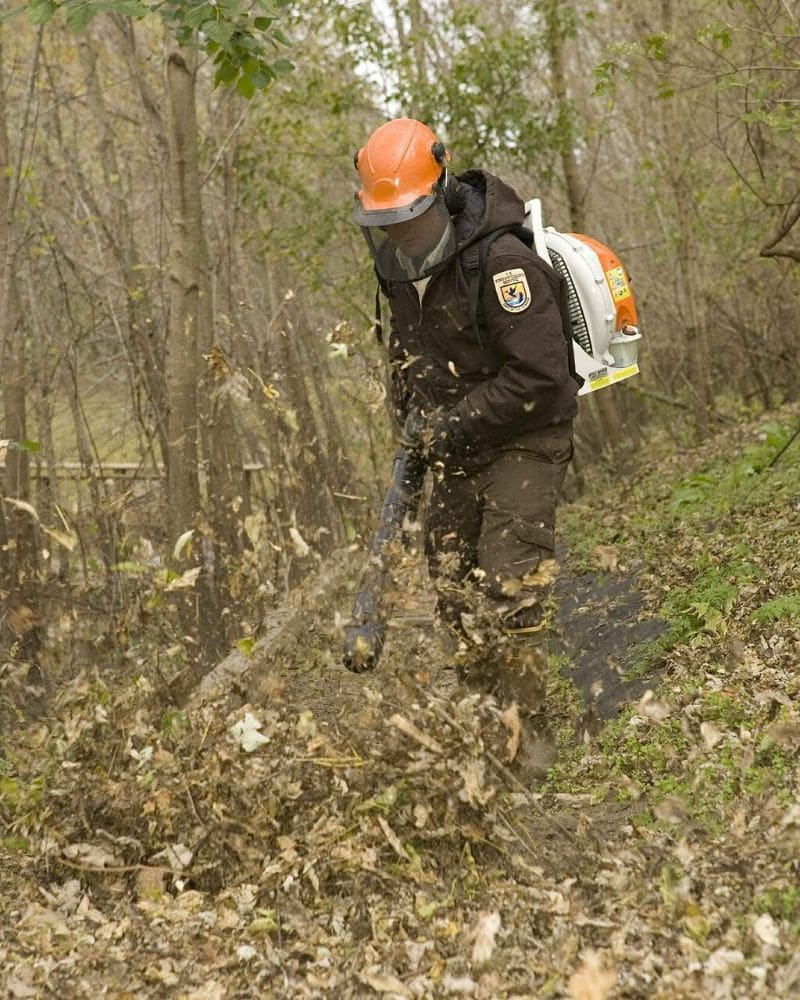
Many low-growing flowering plants indoors and outdoors thrive well under partial shade so your garden or lawn may be situated under the canopy of a tree. When the trees shed leaves, the garden can look cluttered and if these leaves accumulate over time, small delicate plants that get covered may not grow well.
Instead of a broomstick, a leaf blower is more helpful in cleaning and removing this debris by propelling air from its nozzle without causing damage to the plants. Many motorized or electric leaf blowers and be transformed into a vacuum to readily collect the debris and dirt as well.
19. Tree pruner
Also called pole pruner, a tree pruner is a cutting tool like a regular pruning saw but is attached to a long pole to be able to reach unwanted flower stems, buds, dead flowers in the tree. It can cut branches of up to 2 inches in diameter (2).
Most pole pruners are telescopic and can be extended four feet more than the usual length. The tree pruner is a practical and helpful tool when reaching high branches and eliminates the need for ladder or stepping platforms.
20. Lawnmower

If your garden includes a big lawn area aside from your usual shrubs and potted plants, you will need a grass cutter or lawnmower to maintain the grass. Depending on the species and variety, grasses can grow as fast as an inch a week making the garden look unkempt.
A lawnmower is a piece of motorized equipment that cuts grass fast and at a set height. Make sure to mow the lawn after weeding to avoid unwanted seed dispersal leading to a more serious weed infestation in the garden.
21. Watering wand
The watering wand stands out as one of the right tools in every gardener’s toolkit. Its elongated design with a narrow, controllable spout enables precise watering, reaching plants at the root level without causing unnecessary soil disturbance.
With adjustable settings, it caters to various watering needs, from a gentle shower for delicate seedlings to a steady stream for established plants.
The watering wand not only makes the watering process efficient but also minimizes water wastage and ensures that plants receive the care they need for optimal growth and health.
Personal Protective Equipment (PPE)

Gardening may seem like a fairly easy and safe activity to take on, especially with all these tools and aids at our disposal but gardening has its risks and hazards too. Cut wounds may result from improper handling of pruning tools, dirt may hit the eye while digging, and one can fall from climbing trees and ladders.
Safe gardening must always be practiced and we should also make sure that we are protected from any harm that the activity may entail. Personal protective equipment or PPE is an essential set of clothing and equipment that safeguards the gardener from harm.
Gloves protect the hands from dirt, chemicals, and sharp parts of a plant or tool. Face masks and goggles protect from flying debris or fumes. Pants, long-sleeved shirt, apron, and a hat protect the skin and head from coming in contact with harmful chemicals and materials as well as the heat of the sun.
Garden Tool Care and Maintenance
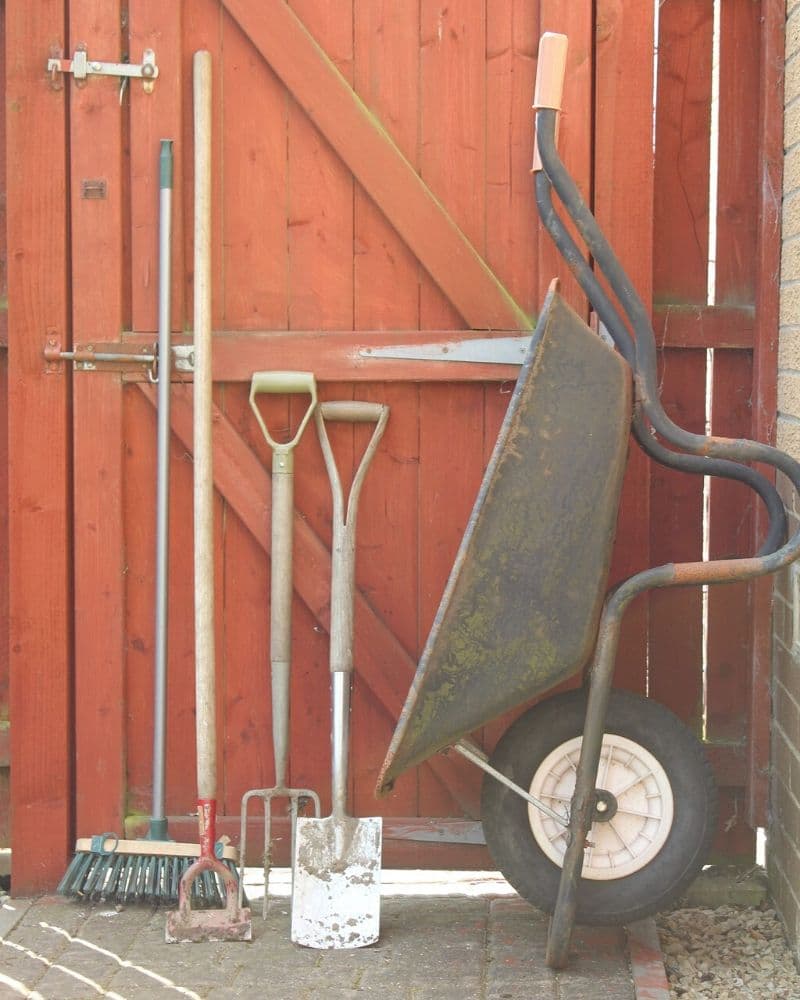
Caring for your garden bed is not only about the plants but your garden tools too. You would probably invest in quality tools so to keep them in top shape, they should be cared for and maintained so they can last longer and serve you well.
All your tools should be kept clean and sharp, especially the ones for pruning, cutting, and digging. But most importantly, they should be kept sterile. Many tools come in contact with disease-causing fungi and bacteria in the soil and plants and will spread the infection when used on other plants in the garden (2).
Water and Soap
Each tool should be washed under running water after use. They should then be scrubbed with soapy water and quickly soaked in bleach and water dilution for sterilization. Rusting is the number one enemy of metal tools so thoroughly dry them with a clean towel or rag and then store in their respective shelf.
Buckets, containers, and garden hose should also be washed and clean. Coil your hose up when not in use to avoid damage. Many times, the garden hose gets run over by cars causing holes and leaks over time. Waterproof tapes and rubber straps can be used to stop the leak, after all, quality hoses tend to be expensive (3).
Sanding, Sharpening, and Oiling
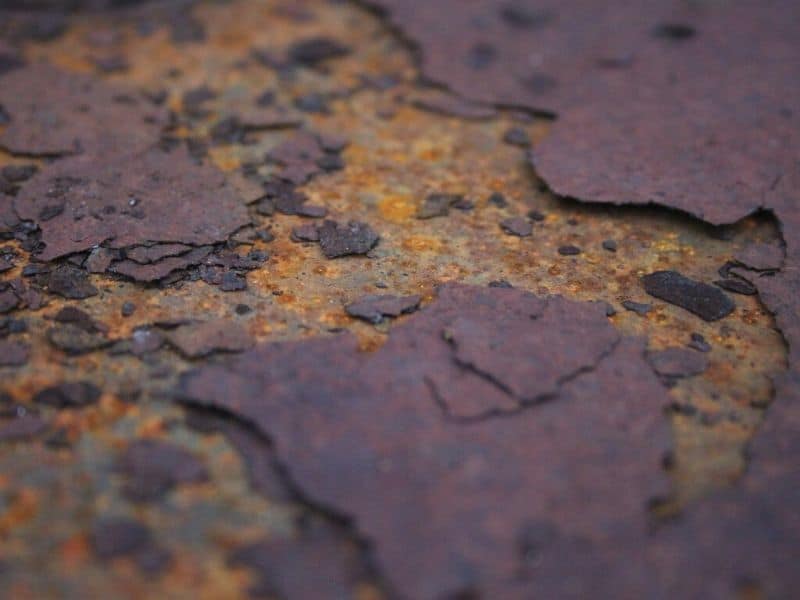
Most tools have wooden handles that tend to get rough when constantly exposed to moisture. Sand these handles once dry and apply a protective layer of varnish. Rusts that have formed on your metal tools should be removed by scrubbing with a wire brush.
Keep the edges of your cutting and digging tools sharp using a flat-file but first, make sure you are wearing the right PPE. Then protect these metal parts with plant-based oil from corrosion.
A good technique in oiling your metal tools is by slightly soaking a bucket of sand with linseed oil and inserting the blades and prongs several times to oil the tools and rid of remaining dirt at the same time. The wheels or your carts and wheelbarrow should also be greased lubricated to the bearing.
Other Garden Materials
Garden materials and supplies are just as important as the tools and plant itself in the garden. These materials serve as the planting media, container, supplement, and protection of the plants which come into contact with garden tools most of the time as well.
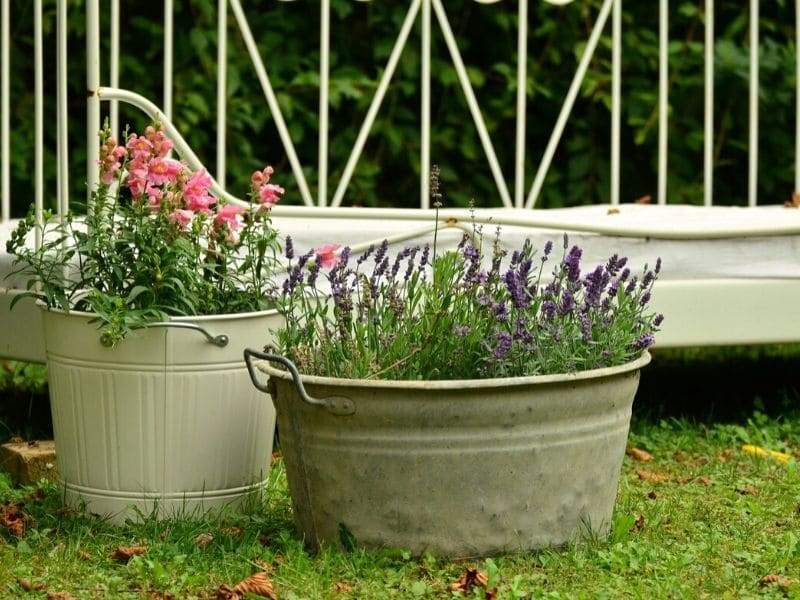
Pots serve as temporary or permanent containers of plants. They can be decorative especially when used indoors or utilitarian in an outdoor or a vegetable garden. There are different kinds of pots in terms of material and composition (2). There are concrete, plastic, fiberglass, ceramic, terra cotta, kiln-dried clay, glass, stainless steel, and recycled among others. They come in different shapes, sizes, and colors and some are self-watering too.

Planting medium refers to the material in which the plant grows. Soil is the most common and traditional medium for most plants, especially outdoors but other materials provide more nutrients, aeration, and anchorage. Coco coir, sand, vermiculite, gravel, peat moss, and perlite are some of the most commercially available planting media.
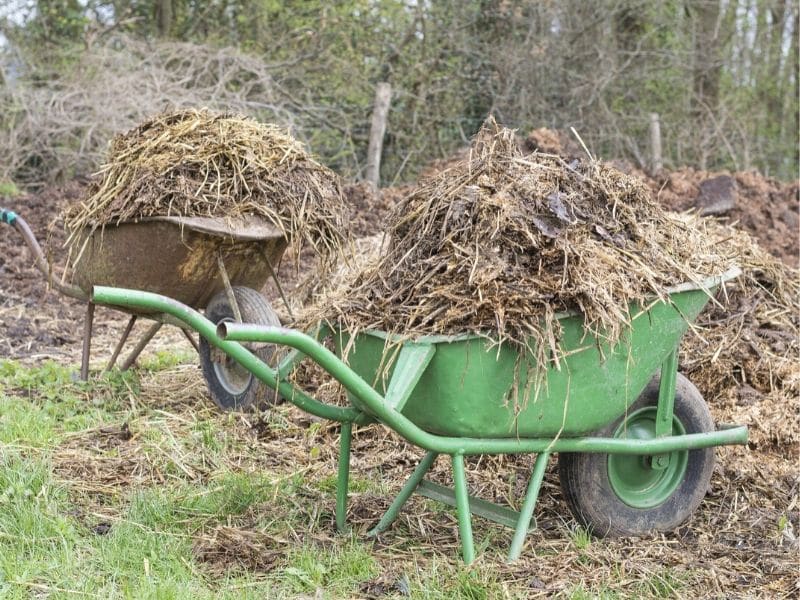
Fertilizers provide nutrients to the plants to keep them healthy and vigorous. They come in organic and inorganic forms and usually contain the 3 main macronutrients that plants need, nitrogen, phosphorus, and potassium. Organic fertilizers often come from composts, animal manure, and worm castings. Inorganic fertilizers come in the form of urea, complete fertilizer, and sulfate of potash among others (2).
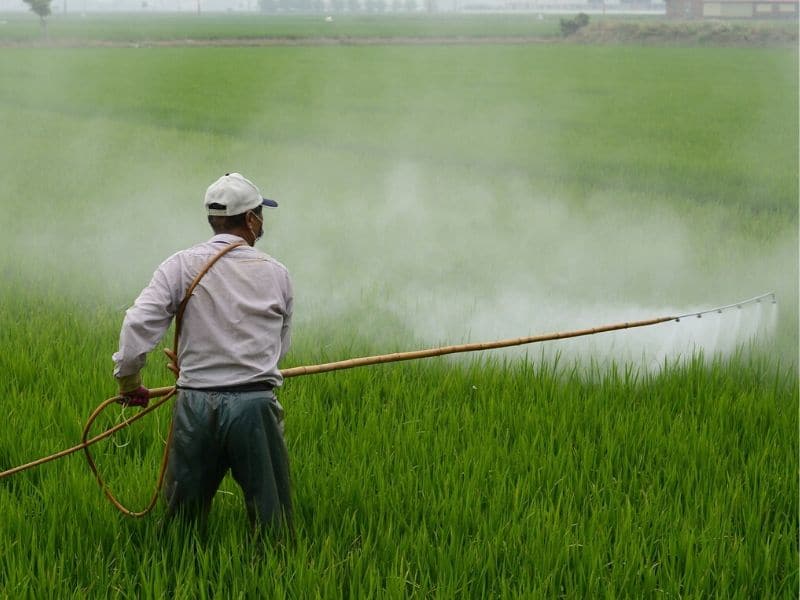
Pesticides are substances that help control garden pests. There are specific pesticides for certain pests, insecticides are for insects, fungicides are for fungi, nematicides are for nematodes, and molluscicides are for snails and slugs. Most pesticides available in the market are synthetic but you can make a basic homemade pest control by mixing vegetable oil and soap. Neem oil is also a popular organic control for most insect pests.
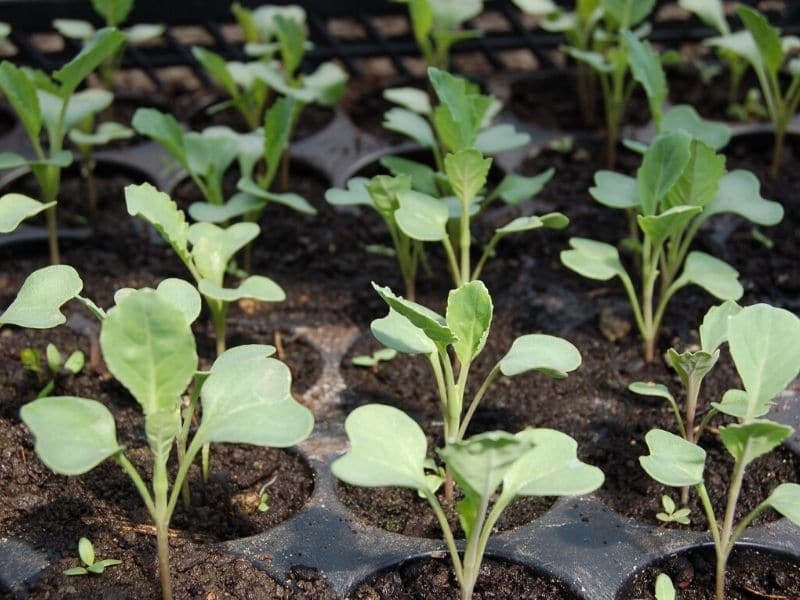
Seedling trays are temporary containers that hold plants from seed to seedling stage. Once hardened and ready for transplanting, the seedlings are transferred from the trays to potting bags or directly to the garden plot or pot. Seedling trays help germinate and establish plants since each hole on the tray readily serves a single seedling for transplanting.
Enjoy this guide? Share for later!
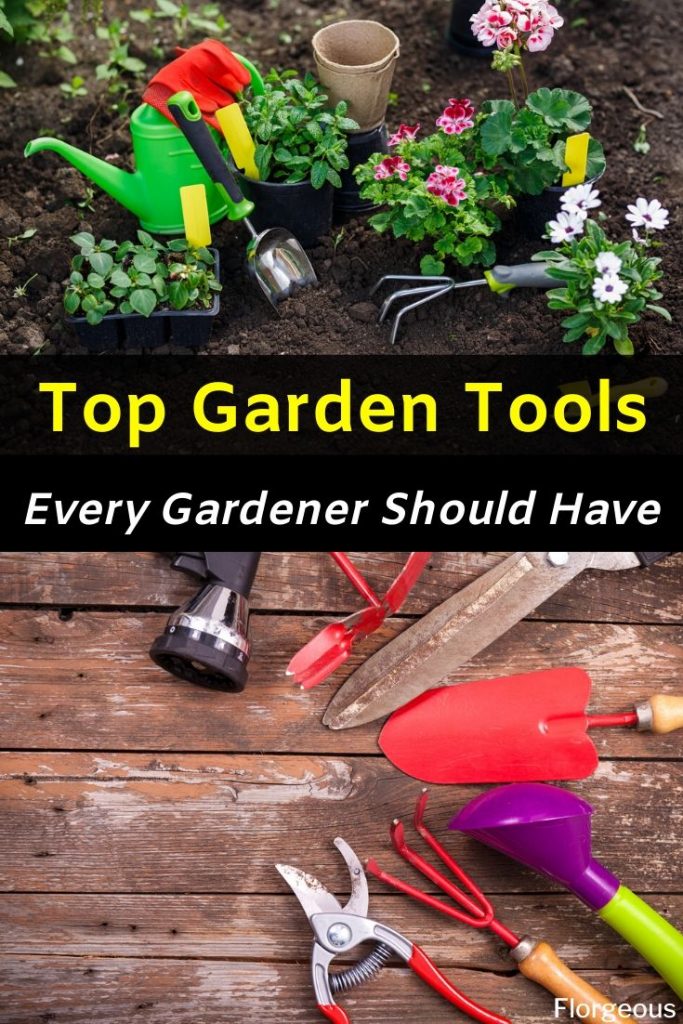
References
Reference List:
(1) Damrosch. B. “The Garden Primer.” Rodale. 2003. P. 673.
(2) Fox, J. “How to buy the Right Plants, Tools, and Garden Supplies.” Timber Press. 2013. P. 224.
(3) Davidson, H. “Care and Repair of Lawn and Garden Tools.” Tab Books. 1992. P. 257.
Close

